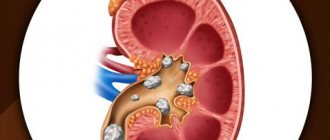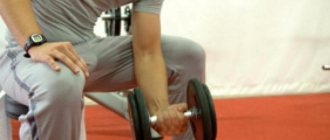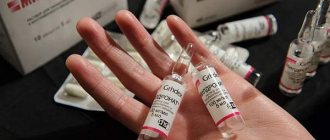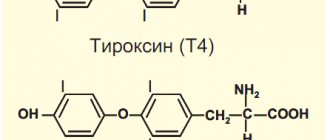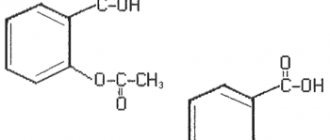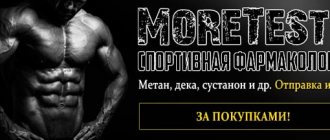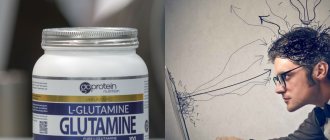Vitamin B9, or folic acid, is one of the most important elements for the human body. This water-soluble substance is quickly eliminated from cells, so the required amount of vitamin must be supplied from outside every day. This can be achieved by both a balanced diet and regular use of medications containing folic acid.
Function of vitamin B9 in the body
- The point of application of folic acid is the nervous system and the brain in particular . In addition, this vitamin is part of the cerebrospinal fluid, being an important element for maintaining homeostasis in the spinal cord. Folic acid plays no less important role in iron metabolism. It supplies carbon for the formation of iron-containing proteins in hemoglobin, affects the synthesis of red blood cells and thereby regulates the supply of oxygen to every cell of our body.
- The synthesis of DNA and RNA is also not complete without the participation of folic acid. Without it, genetic information is not encoded, and therefore old cells that have fulfilled their purpose are not replaced with new ones. In addition, it is vitamin B9 that is responsible for the feeling of appetite at the sight of tasty food.
- Folic acid also affects our mood. By organizing methionine metabolism, it promotes the production of so-called happiness hormones. At the same time, the synthesis of serotonin and norepinephrine occurs. Serotonin has a calming effect on the nervous system, providing the brain with the opportunity to rest. Norepinephrine gives you a boost of energy for the whole day. Both of these substances help cope with stress, and without the participation of folic acid, their production in the body would be impossible.
There are two forms of vitamin B9 – synthetic and natural. Interestingly, the human body absorbs the synthetic version best. This feature allows the active use of folic acid preparations in medicine and bodybuilding.
Reception features
This vitamin is recommended to be taken without taking into account when the meal will be taken. For athletes, it is recommended to divide the required daily dosage into two applications. The most preferable would be the morning intake (before training) and the subsequent one (two hours after completion of physical activity).
If you plan to use an increased dose of the drug (1000 mg), it is necessary to take it three times a day. It is worth considering that taking Vit. B9 after training is a must, this need is determined by the increased need for certain vitamins and nutrients that are necessary for the successful completion of recovery processes and renewed strength.
Functions of folic acid in the body:
- synthesis of nucleic acids (DNA and RNA);
- regulation of the process of cell division;
- participation in the formation of protein and amino acids;
- red blood cell synthesis;
- muscle tissue regeneration;
- growth and development of all tissues in the body;
- stimulation of the immune system.
Mode of application
You can take folic acid for bodybuilding regardless of meals and diet. The daily dosage should be divided into several doses. The morning dose is taken before training, the second – two hours after training. Men are usually prescribed a little more than women due to their muscle mass and hormonal levels.
If the dosage is increased to 1000 mcg per day, it must be divided into three doses. The last dose of folic acid is taken in the evening. Two hours after completing an active workout, the phase of absorption of microelements, vitamins and nutrients begins, therefore it is during this period that it is important to drink one of the parts of the daily dosage.
Sources
- https://lifegong.com/vitamins/vit-b9/b9-pohudenie.html
- https://pillsman.org/26001-folievaya-kislota-v-sporte.html
- https://supermass.ru/farmakologiya/folievaya-kislota-kak-prinimat-i-eyo-rol-v-bodibildinge.html
- https://lekhar.ru/bad/vitaminno-mineralnye-kompleksy/folievaja-kislota-v-bodibildinge/
- https://ka4iron.ru/sportivnoe-pitanie/drugie-preparaty/folievaya-kislota-v-bodibildinge.html
How to take folic acid for bodybuilding
The daily requirement for folic acid in men and women is 300 mcg. During pregnancy, it is recommended to consume up to 400 mcg of vitamin B9 in order to prevent congenital malformations in the fetus.
In the case of intense exercise in people leading an active lifestyle, the daily need for acid increases to 600 mcg. In some cases, it is possible to increase the dosage to 1200 mcg per day. The exact dose is calculated based on the athlete’s body weight and level of physical activity.
Side effects and contraindications
It is not always safe to take this supplement. Certain diseases are contraindications:
- oncological diseases;
- impaired absorption of iron;
- asthma;
- some forms of anemia;
- renal failure;
- individual intolerance.
Side effects may also occur:
- nausea, vomiting;
- diarrhea, flatulence;
- unpleasant taste in the mouth;
- excitability, insomnia;
- convulsions;
- allergy.
An overdose of the vitamin is dangerous. To avoid it, you should not exceed the maximum daily dose determined by your doctor. Long-term use (more than 60 days) is not recommended.
The role of folic acid in bodybuilding
Folic acid is necessary for athletes who receive heavy daily loads during training. This vitamin increases the body’s adaptive capabilities, which means it allows you to get the most out of regular activities. Folic acid will help muscles and all other organs cope with overload and allow them to quickly restore their strength after training.
Professional athletes have long included folic acid in the list of mandatory nutritional supplements. Vitamin B9, which activates protein synthesis, is an essential component for every bodybuilder. Taking this drug allows you to quickly build muscle mass, increase endurance and make your workouts truly effective.
Application for weight loss
The use of folic acid for weight loss is determined by its ability to increase the speed of metabolic processes and break down fats.
It’s not for nothing that B9 is called the “ slimness vitamin .” It begins to activate in the liver, breaking down fats into fatty acids and alcohols, which are then excreted from the body naturally.
Some people's livers are unable to activate all the folic acid they get from foods, so they gain extra weight. In this case, it is necessary to take additional B9.
Folic acid alone will not cope with obesity; it is an addition to diet and exercise.
How to use
An adult needs 200 mcg of this vitamin per day. It is better to take it together with vitamin C and B12 , as they have a better effect on metabolism. The duration of the course is 60 days. Only a doctor can determine the exact dosage.
It is possible to achieve good results only when obesity is associated with a lack of this particular acid.
Important! Some people experience malfunctions at the gene level, then B9 is powerless in the fight against excess weight.
Products
Back in the 20s of the last century, it was noticed that dietary therapy, including yeast and liver, cures patients with megaloblastic anemia. Modern research has reliably identified foods containing the greatest amount of folacin:
- fruits and their derivatives, especially citrus fruits;
- vegetables - Brussels sprouts, spinach and other green foods with rich color;
- grain crops;
- peanuts, vegetable products from beans and peas;
- beef liver.
Consequences of excess and deficiency
As a result of many reasons, both hypo- and hypervitaminosis can occur in the body. Both pathologies are characterized by the development of a specific symptom complex and also pose a danger to the body as a whole.
Insufficient levels of folacin in the blood occur:
- Against the background of starvation or insufficiently varied diet. At the same time, the intake of the substance is limited by nutritional factors, irregular consumption of greens, vegetables and fruits.
- As a result of heat treatment of food. If most foods come in processed form, the level of vitamin B9 in the blood decreases. This situation is explained by the instability of the structure of folic acid when exposed to temperatures, that is, the vitamin is destroyed.
- Due to impaired absorption. The substance enters the small intestine. Some pathologies lead to a decrease in the efficiency of the intestines, as a result of which the penetration of folacin through enterocytes into the blood decreases. Hypovitaminosis occurs against the background of Crohn's disease and ulcerative colitis.
- Due to dysbiosis. Some part of the compound is still produced by the intestinal microflora. After prolonged antibiotic therapy or a previous illness, the balance of beneficial microorganisms may be disrupted, and, consequently, the production of the substance will decrease.
Vitamin B9 deficiency manifests itself as a disorder of hematopoiesis in the form of megaloblastic anemia. When the disease occurs, giant blood cells called megaloblasts appear in the blood against the background of a general decrease in the number of normal red blood cells. The pathological condition is accompanied by rapid fatigue, bowel dysfunction, gastric achylia, the appearance of aversion to meat dishes, the development of Hünter's atrophic tongue - a number of symptoms that include unpleasant sensations in the area of the muscular organ, changes in taste sensations and the appearance of the mucous membrane like a “varnished tongue”. A consequence of the progression of the disease is funicular myelosis, which is characterized by gait disturbance, the occurrence of unpleasant nervous sensations on the surface of the skin, weakness and decreased sensitivity of the limbs.
A reduced concentration of folic acid also leads to the early appearance of gray hair, mental disorders, and miscarriages.
In the 21st century, hypovitaminosis is extremely rare. This is due to a widespread improvement in the quality of life. The indication for taking vitamin B9 is the prevention of disorders of fetal formation during pregnancy, as well as identified deficiency of the compound.
Hypervitaminosis develops when there is an overdose of vitamins. In this case, damage occurs to the kidneys, nervous system, and gastrointestinal tract. In addition, high concentrations of folacin have been shown in clinical studies to reduce the activity of NK cells, the natural killer cells of the immune system. These components of the body's defense exhibit an antitumor effect, so hypervitaminosis increases the risk of developing cancer.
Contraindications to the use of folacin are therapy with cytostatics or anticonvulsants, as well as individual intolerance to the components of the drug.
Reception scheme
A bodybuilder should consume about 600 mg of folic acid per day. Professional athletes can increase up to 1000 – 1100 mg of vitamin per day.
Important! There is no single scheme for how to take B9 correctly. It all depends on the regularity of training, physiological characteristics, weight and the number of training sessions per day.
It is recommended to divide the daily dosage into two and take one in the morning before classes, the second in the evening 2 hours after classes.
If the dose is increased by 100 mg, then the dose is carried out 3 times a day.
A bodybuilder should consume about 600 mg of folic acid per day. Professional athletes can increase up to 1000 – 1100 mg of vitamin per day.
It is recommended to divide the daily dosage into two and take one in the morning before classes, the second in the evening 2 hours after classes.
If the dose is increased by 100 mg, then the dose is carried out 3 times a day.
Duration 2-3 weeks. Characterized by a decrease in training intensity with a frequency of 3 times a week. After the competitive stage, it is aimed at restoring the athlete’s performance and preserving muscle mass.
Scheme 21
- Karsil (Legalon)
- Vitamin B1, B6, B12
- Safinor
- Trental
Scheme 22
- Karsil (Legalon)
- Vitamin C
- Folic acid
- Calcium glycerophosphate
- Camplamin
Scheme 23
- Safinor
- Cobamamide
- Folic acid
- Ginseng
- Karsil
Duration 2-3 weeks. It is characterized by a sharp decrease in all types of power load, up to their complete elimination. It is useful during this period to switch to other sports and aerobic outdoor games (swimming, cycling, skiing, running, etc., as well as volleyball, football, basketball, etc.).
Amino acids of free forms - dosage regimens Currently, a special place among restorative pharmacological agents is occupied by amino acids of free forms: Arginine, Histidine, Lysine, Cysteine, Tryptophen, Leucine, Isoleucine, Valine, Glycine, Ornithine, etc. This is due to the fact that a number of amino acids free forms tend to stimulate the release of hormones, in particular growth hormone (somatotropic hormone) and other hormones.
Schemes for the use (combination) of free form amino acids:
- SCHEME 1. 1.2 g lysine, 1.2 g arginine, 0.9 g ornithine. Take on an empty stomach immediately after training or before bed.
- SCHEME 2. 1-4 g of leucine, 1-4 g of isoleucine, 1-4 g of valine, 100 mg of vitamin B6. Use 30 minutes before training, and 30-60 minutes after it.
- SCHEME 3. 1 g arginine, 1 g ornithine, 4 g glycine. Take at night, before bedtime.
- SCHEME 4. 1.5 g of ornithine, 3 g of glycine, 0.5 g of tryptophan, 100 mg of vitamin B6, 250 mg of vitamin PP. Take before bed, on an empty stomach.
- SCHEME 5. 2.2 g arginine, 1 g ornithine, 1 g tryptophan, 1 g. glycine, 250 mg vitamin B6, 250 mg vitamin PP. Take before bed, on an empty stomach.
- SCHEME 6.1.5 g ornithine, 2 g tyrosine, 1 g arginine, 1 g vitamin C, 200 mg vitamin B6. Take in the morning, on an empty stomach.
ATTENTION: the selection of pharmacological drugs must be strictly individual for each athlete and determined by a doctor. Arbitrariness in taking medications by an athlete should be excluded.
The recommendations are intended mainly for fairly well-trained athletes (fitness, bodybuilding) with at least 1-2 years of training experience.
Anabolic drugs can only be used as prescribed by a doctor and are contraindicated in children. The information presented does not encourage the use or distribution of potent substances and is aimed solely at reducing the risk of complications and side effects.
